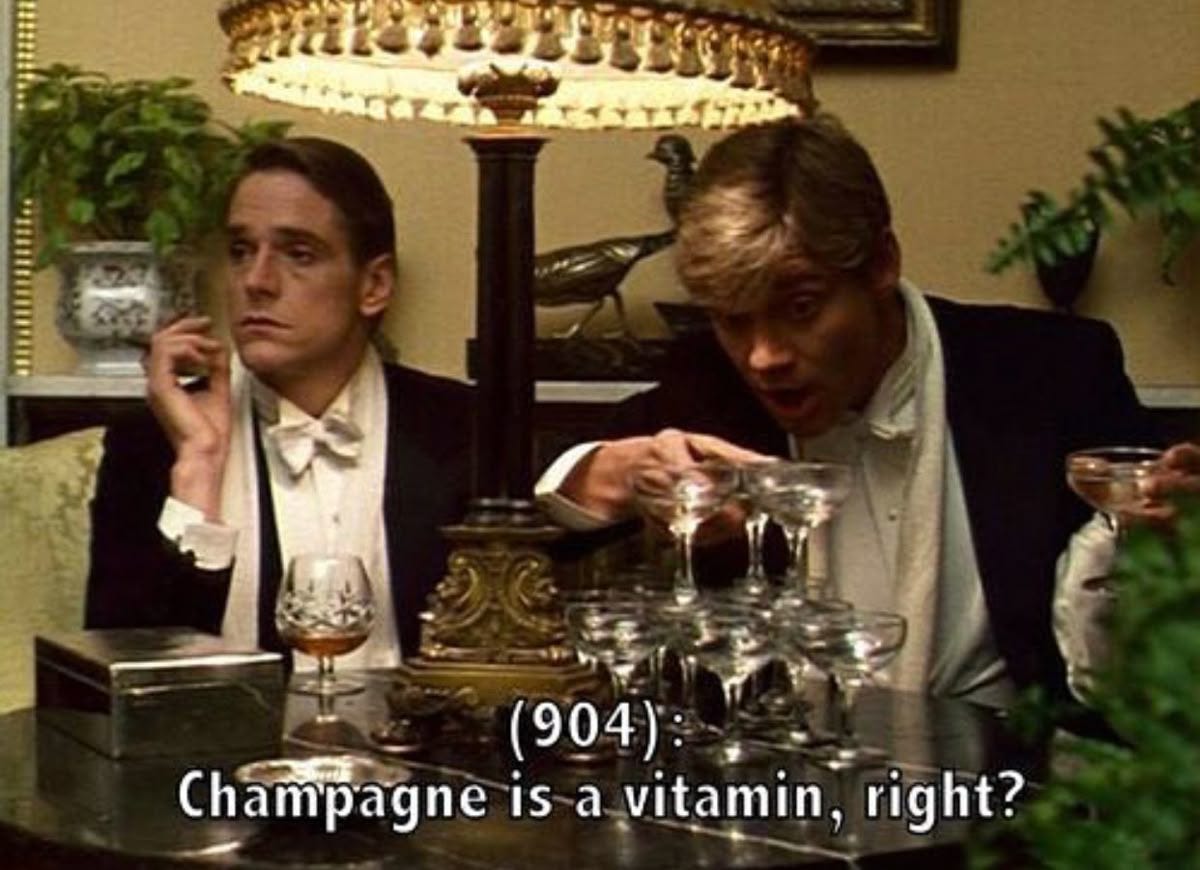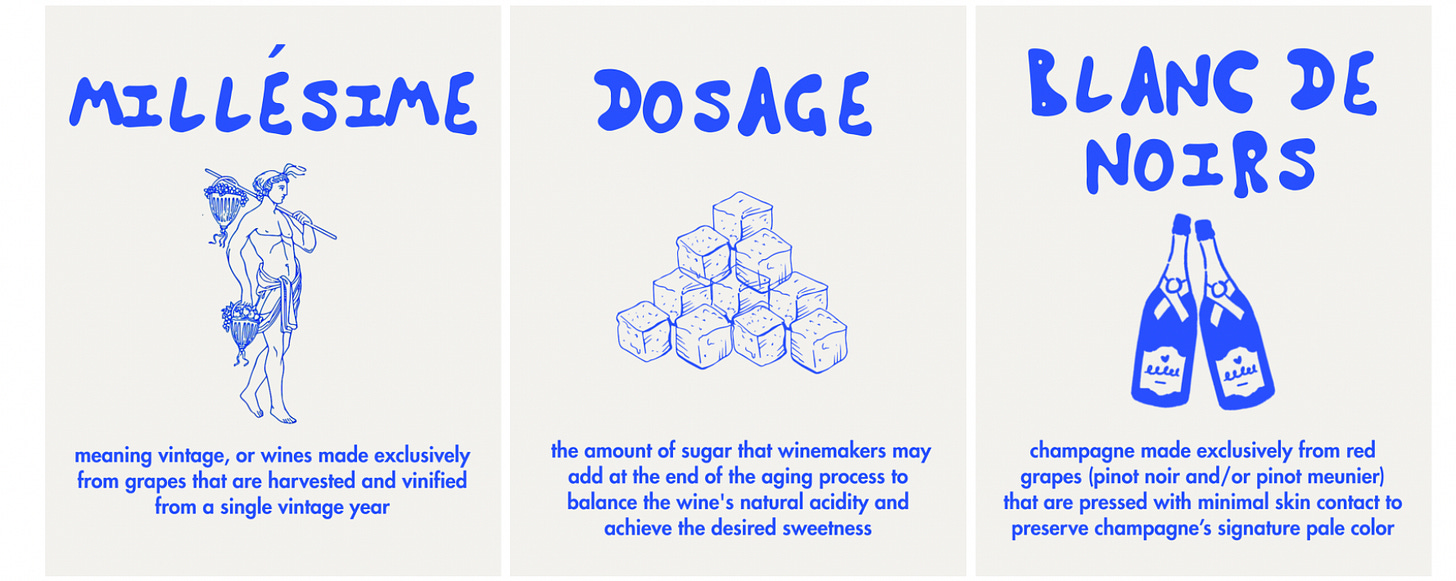What We Talk About When We Talk About Champagne
a pocket-sized dictionary for understanding the sprawling region
Champagne, the idea, has always been more intriguing to me than Champagne, the wine. Where the first invokes images that overflow with life—of parties and new years, birthdays and bubbles bath—the latter has a sort of flattening effect, the 2D-ness of a cartoon heart beating inside one’s chest. It’s that he Champagne we’re accustomed to drinking—some fraction of the more than 80% of wines exported by large, commercial houses—fails to live up to its promise of transcendence, of occasion, of commitment to time and place. In their dedication to consistency, the Champagne producers we know have stripped away so much of what makes Champagne special. Then, on a recent trip to the region, I learned about the history of Champagne, its significance, and what makes it truly ~sparkle~. The following is a list of words meant to help you dive into and navigate the world of Champagne so you can come to love it, as I have, for all that it is and all that it contains.
General Wine Vocabulary
Cuvée – a term that generally refers to a specific blend or batch of wine, often made from more than one grape variety. In Champagne, cuvée has a more precise meaning: it refers to the first and finest portion of juice extracted during the grape pressing—the highest quality juice used for the best wines.
Cépage – French for grape variety, it refers to the kind or kinds of grape used in a particular wine
Vintage – the year in which grapes are harvested and wine is produced
Terroir - translating to earth or soil, it captures all of the facet’s of a wine’s unique origin, including the region, soil, altitude and climate of an area
Must – the freshly pressed juice from harvested grapes that includes the skins, seeds, and sometimes stems. It is the product of the first step in the winemaking process, which will eventually undergo fermentation to become wine.
Lees – the deposits of dead / residual yeast that settle at the bottom of a vat or bottle after fermentation and aging. Lees are primarily used in white and sparkling wines to add texture, complexity, and flavor, including such as creaminess, nuttiness, or brioche-like notes. In the case of natural wines, this is beneficial to balance out acidity. (It sounds grosser than it is, promise).
Vocabulary of Champagne
Champagne – Long before it became synonymous with sparkling wine, it referred to the French winemaking region 90 minutes northeast of Paris. Spanning over 80,000 acres (34,000 hectares) and encompassing more than 300 distinct villages, it has existed since before Roman times–its name actually comes from the Latin, campania, translating to countryside, which called to mind the similarities between the rolling hills of this region and the Italian countryside of Campania . It wasn’t until the 1930s that the idea of an “Appellation d'Origine Contrôlée” (AOC) was introduced to enshrine into French law the standards and procedures for producing Champagne.
Keep reading with a 7-day free trial
Subscribe to amuse-bouche to keep reading this post and get 7 days of free access to the full post archives.



